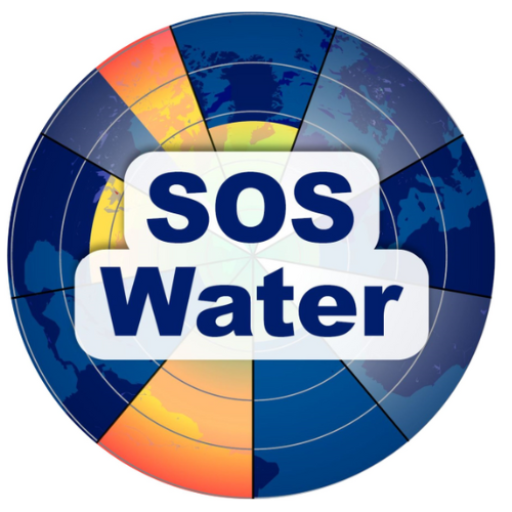PUBLICATIONS
Imagining a Safe Water Space for Danube’s Future Engaging stakeholders for the co-creation of a Safe Operating Space for the Danube basin
November 22, 2023, Vienna, Austria
Artuso S., Burek P., Cetinic K., Kahil T., Langhans S., Politti E., Rotaru S., Smilovic M. & Tramberend S.
IIASA Report, 13, May 2024
Abstract
On the 23 November 2023, the SOS-Water project held the first stakeholder workshop for the Danube Basin case study. As water challenges increase worldwide, exacerbated by climate change, the SOS-Water project aims to establish a Safe Operating Space (SOS) for water resources, to ensure an adequate, sustainable and clean water supply for both human activities and natural ecosystems. Funded by the European Union’s Horizon Europe Framework Programme, the project uses an integrated approach that combines modeling, monitoring, and stakeholder engagement, applied to four different case studies in Europe and beyond. The
Danube River basin, known for its ecological and socio-economic diversity, is one of the selected case studies. The workshop convened key stakeholders from various freshwater-related institutions, promoting dialogue and collaboration to address the complex challenges that the basin is facing. During a day of interactive activities, stakeholders collectively identified values, objectives, and priorities essential for sustainable water management in both the entire Danube basin and the Danube Delta. Discussions underscored the need for integrated approaches that balance environmental conservation, socio-economic development, and climate adaptation. Key outcomes include the refinement of objective hierarchy maps that reflect the stakeholder input and priorities collected during the workshop. The next steps will be the development of specific indicators for the objectives. This is followed by the weighting of goals (i.e., objectives) to be achieved through further stakeholder engagement activities and workshops, towards a co-development of the Safe Operating Space for the Danube River basin.
For the full report please click here: SOS-Water_Workshop Report
Low flow sensitivity to water withdrawals in Central and Southwestern Europe under 2 K global warming
Greve P., Burek P., Guillaumot L., van Meijgaard E., Aalbers E., Smilovic M., Sperna-Weiland F., Kahil T. & Wada Y.
Environmental Research Letters 18, August 2023
Abstract
A sufficient freshwater supply is vital for humans, ecosystems, and economies, but anticipated climate and socio-economic change are expected to substantially alter water availability. Across Europe, about two-third of the abstracted freshwater comes from rivers and streams. Various hydrological studies address the resulting need for projections on changes in river discharge. However, those assessments rarely specifically account for the impact of various water withdrawal scenarios during low flow periods. We present here a novel, high-resolution hydrological modeling experiment using pseudo-global warming climate data to investigate the effects of changing water withdrawals under 2 K global warming. Especially in Western and Central Europe the projected impacts on low flows highly depend on the chosen water withdrawal assumption and can severely decrease under the worst case assumptions. Our results highlight the importance of accounting for future water withdrawals in low flow projections, showing that climate-focused impact assessments in near-natural catchments provide only one piece of the anticipated response and do not necessarily reflect changes in heavily managed river basins.
Balancing Sediment Connectivity and Energy Production via Optimized Reservoir Sediment Management Strategies
Tangi M., Bizzi S., Schmitt R., & Castelletti A.
Water Resources Research, 59, June 2023
Abstract
Sediment connectivity plays a fundamental role in sustaining ecosystem goods and services in fluvial systems, including hydropower production. Dams alter the natural processes of sediment transport by trapping sediment and reshaping downstream hydrology and geomorphology. Due to these processes’ interconnected nature, dams’ impacts extend in time and space beyond the dam site to the entire river system. System-scale approaches to reduce dam impacts commonly only consider dam siting, overlooking the potential of sediment management strategies integrated into the dam operations to offer more flexible solutions for mitigation. Herein, we contribute a sediment routing model (D-CASCADE) to assess the impacts of reservoirs and their management strategies on river sediment connectivity. D-CASCADE is applied to the 3S river system, a tributary of the Mekong River, a hotspot of potential dams in the Lower Mekong. We analyze three dam development portfolios. The effect of reservoir management is examined by assessing daily sediment delivery with specific dam release strategies. Model results predict sediment yield to the Mekong to reduce by 31%–60%. Finally, we explore trade-offs between hydropower generation and sediment connectivity across cascades of multiple reservoirs. Results show that repeated flushing operations during the early wet season could significantly increase sediment delivery with minimal (max 6%) hydropower losses. While poor trade-offs between sediment and hydropower have been locked-in in the Mekong, our results highlight the potential of including sediment connectivity models in multi-objective decision-making frameworks to devise integrated water and sediment management strategies that mitigate connectivity disruptions while minimizing losses in other sectors.
Vulnerability assessment for climate adaptation planning in a Mediterranean basin
Alba Solans M., Macian-Sorribes H., Martínez-Capel F., Pulido-Velazquez M.
Hydrological Sciences Journal, June 2023
Abstract
The Iberian Peninsula is a climate change hotspot, where the increase of temperature is faster than the global annual mean surface temperature, with the largest reduction of precipitation. Consequently, fresh water availability is expected to decrease substantially. In this context, freshwater systems are especially vulnerable to meeting the water demands and ecosystem requirements we know today. In this paper, we present an extension of the eco-engineering decision scaling (EEDS) method to explore trade-offs in agricultural and ecologic metrics at the catchment scale across a range of unknown future hydrological and climate states. The extended EEDS method evaluates current water resource management rules focusing on agricultural and ecologic objectives, identifies climate hazards that make the system fail and assesses climate risk in 3 time horizons for the design of adaptation measures. The case study is the Serpis River basin, Spain, where 72% of available water is used for agricultural purposes.








Keep In Touch